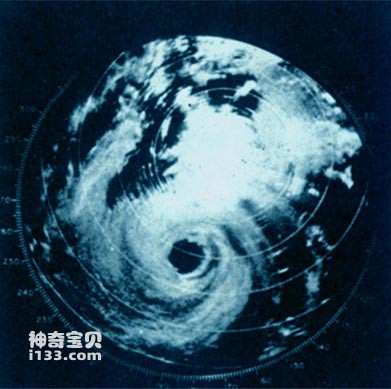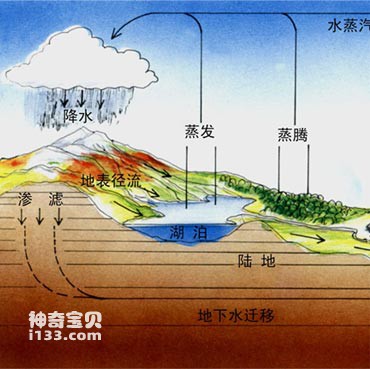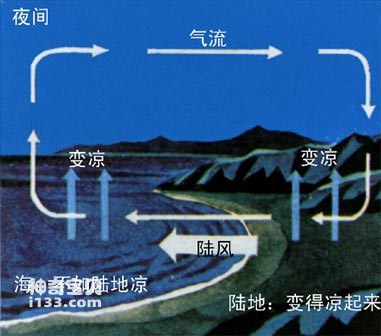There is a good line in ancient Chinese poetry: "The rain is about to come, and the wind fills the building." Wind and rain are like twin brothers, always walking together. So, where does the wind and rain on the earth come from?
Different winds and rains have different causes and sources. However, looking at the problem from the perspective of the earth's macroscopic water cycle, wind and rain originate from the ocean, and the ocean is the home of wind and rain.
On the vast ocean surface, seawater continues to evaporate into the atmosphere. The air mass over the sea is like a wet towel filled with water. Moisture rises into clouds, and with the energy provided by the sun and ocean, it is transported from the sea to the sky over the continent, falls to the ground in the form of rain and snow, and then returns to the ocean through rivers. The total amount of water on the earth is about 1.5 billion cubic kilometers, of which seawater is about 1.37 billion cubic kilometers. This cycle has continued for thousands of years, with little change in quantity. This is the natural cycle of Earth's water. Wind and rain start from the ocean and return to the ocean, so we say that the ocean is the home of wind and rain.

Typhoon cloud image seen from satellite
Typhoon is a typical meteorological example of land and sea water circulation. Typhoons occur in tropical oceans near the equator. Near the equator, the sun shines directly on the sea surface all year round, and the sea water absorbs and stores a large amount of solar energy. The ocean continuously supplies moisture and energy to the air on the sea surface, and the high-humidity and high-temperature air on the sea surface accelerates to rotate and rise to form a tropical storm. Tropical storms originate in the Pacific east of the Philippines, reach a certain intensity, and move towards my country and Japan are called typhoons. Hurricanes are formed in the Atlantic Ocean and Caribbean Sea and hit the American continent. When my country's meteorological department forecasts typhoons, they name them with sequential numbers. There are about 20 typhoons every year on average, making it the region with the most typhoons in the world. Atlantic hurricanes are named after girls.
The typhoon makes landfall and brings violent storms. When a typhoon passes by, strong winds and floods cause disasters. However, the large amounts of rain brought by typhoons are still very beneficial to humans. The area around 30 degrees north latitude in Asia, Africa, and the American continent is a sinking zone of air on the earth. In summer, high air pressure controls the situation, resulting in drought and little rain, forming a large desert. Fortunately, the rain brought by the typhoon prevented desertification in this area of our country. Typhoons bring abundant rain, which is beneficial to plant growth and reservoir water storage.
Under the action of thermal energy, the atmosphere and ocean are always circulating back and forth through the interface between them. This exchange of thermal energy between the atmosphere and the ocean affects the changes in many materials on our planet. In the ocean, except for tides, almost all movements are directly or indirectly driven by the atmosphere in various ways, such as ocean circulation, Kuroshio warm current, etc. However, on the other hand, the latent heat energy existing in the ocean stores most of the energy in the atmospheric circulation. The ocean is like a large "thermal engine boiler" on the earth, affecting changes in the atmosphere through the release of its own energy.
On the earth, the ocean, a huge body of water, affects the atmosphere all the time; especially in the equatorial seas, the seawater radiated by the sun releases huge heat into the atmosphere. After the heated air flows rise, it moves towards the earth's poles. Under the influence of the atmospheric system, the Northern Hemisphere becomes a clockwise-flowing ocean circulation. The Southern Hemisphere has an ocean circulation that flows counterclockwise. Under the influence of ocean circulation, some branch currents are formed, such as large rivers in the ocean. Ocean currents carrying huge heat energy transport a large amount of heat energy into the atmosphere along the way, which creates different climates in different places, including wind, rain, ice and snow. In the ocean, due to various reasons, the cold and warm currents flow in different directions, resulting in vastly different marine environments. People have realized through long-term practice that the ocean is the home of wind and rain.
Air conditioners in the global village

Water cycle diagram
Due to the advancement of modern technologies such as aerospace and communications, people living around the world feel that the distance between them has shortened. People living all over the world are closely related to each other, and the earth seems to have become very small, like a village, so someone came up with the term "global village". If we think of the earth as a village or a residential area in a big city, isn't the ocean its central air conditioner?
"All things grow by the sun." When solar energy reaches the earth, more than 80% is absorbed by the earth's surface, and less than 20% is reflected into the sky. The ocean area is large, and seawater has a strong ability to absorb heat and store heat. Most of the solar energy reaching the earth is absorbed and stored in the ocean, and the ocean becomes a huge thermal energy warehouse on the earth. The land surface has poor ability to absorb solar heat, and it is concentrated in very shallow places on the surface, and its storage capacity is also very poor. It gets hot quickly during the day and cools down quickly at night. In this way, the supply of heat to the global village is mainly regulated by the ocean. The ocean affects the earth's climate change through the rise and fall of seawater temperature and circulation of ocean currents, and through its interaction with the atmosphere.
The ocean not only regulates the earth's climate through the atmosphere, but also provides 40% of regenerated oxygen to the earth's atmosphere through photosynthesis of marine phytoplankton. Another 60% of regenerated oxygen is provided by forests and other surface plants. Therefore, people call the ocean and the forest the two lungs of the earth. However, the two-lobed lungs of the earth are opposite to the lungs of animals. They inhale carbon dioxide and exhale fresh oxygen.

Diurnal climate chart A

Diurnal climate chart B
animal tags:
We created this article in conjunction with AI technology, then made sure it was fact-checked and edited by a Animals Top editor.